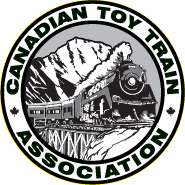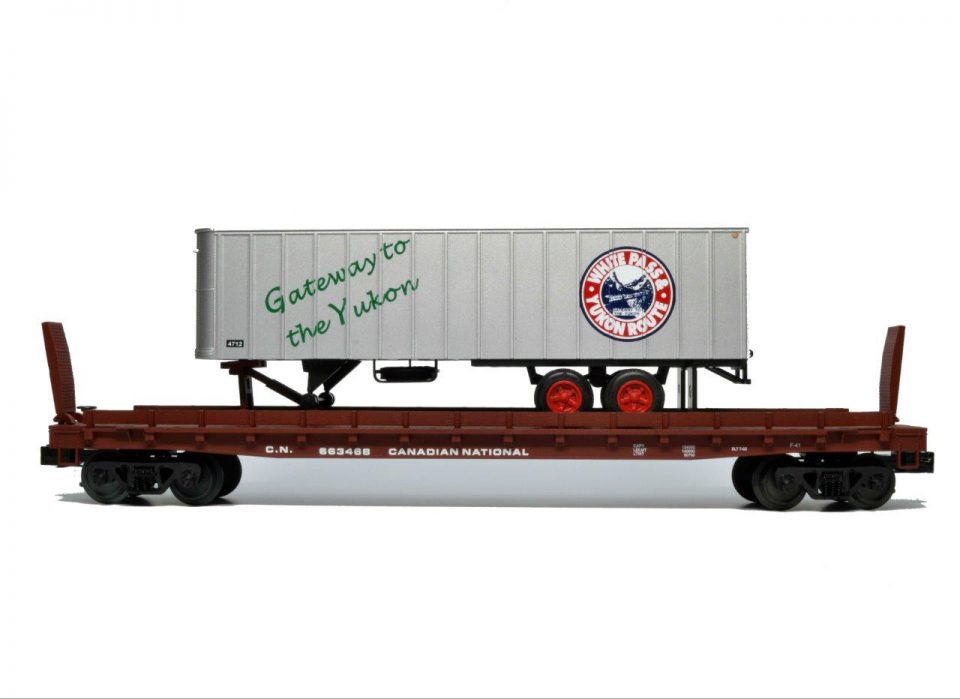SOLD OUT Check your local hobby shop for availability
Cars may still be available at: Kelly’s Kaboose, Kamloops BC Central Hobbies, Vancouver, BC George’s Trains, ON
This very limited-production Weaver O gauge car comes in three road numbers for 2-rail and 3-rail operators. This is the 4th car in a TOFC series.
The combination features include metal frame, trucks and couplers; working ramps, spare tire, ladders and grab rails, and prototypical scheme. Image shows car with 3-rail trucks and couplers.
The Canadian Toy Train Association member cost is $ 80.00 CDN per car including shipping within the lower mainland and Vancouver Island. This is the same price as last year’s car, and a real deal for our members.
About this White Pass & Yukon Trailer on CN flatcar model
The trailer-on-flat-car, or TOFC, concept actually predates the trucking industry. From 1885-1893, Long Island farmers could ship their loaded wagons to Manhattan markets on Long Island Rail Road flatcars. Teamsters rode in their own coach on the farmers’ specials, while their horses traveled in stable cars.
The modern use of railroads to ship loaded trailers began on the Chicago Great Western Railroad (the “Corn Belt Route”) in 1935 and became widespread in the 1950s, under the leadership of a former GM executive named Eugene Ryan and early supporters that included the Pennsy, New Haven, Chicago & Eastern Illinois, Burlington, and Southern Pacific railroads.
Originally a large number of trailers were railroad-owned, and loading and unloading were done “circus-style” by driving the trailers onto a string of flatcars from one end. A major advance came in the 1960s with the advent of the first side-lift cranes, dramatically speeding up loading and unloading. Today the combination of trailer and container shipments, known collectively as intermodal, constitutes the largest class of freight on American railroads.

